
Home
Services
About us
Blog
Contacts
Case IH Advanced Farming Systems: Complete Guide to AFS AccuGuide & AFS Connect Precision Agriculture
Developing custom precision agriculture solutions for Case IH AFS systems? A-Bots.com specializes in software development for Case IH Advanced Farming Systems and ground control station technologies. Whether you need custom mobile applications integrating with AFS Connect telemetry platform, API development connecting AFS Pro displays to enterprise farm management systems, automated workflow solutions for data synchronization between AFS and third-party platforms, advanced analytics dashboards processing operational data from Case IH equipment, or comprehensive testing and validation of AFS AccuGuide compatibility across diverse implement configurations, our development team delivers production-ready solutions. We create tailored interfaces for AFS Connect remote monitoring, develop custom prescription management tools optimized for Case IH workflows, build cloud integration layers enabling seamless data flow between AFS systems and agronomic software, implement sophisticated reporting tools transforming raw field data into actionable insights, and provide quality assurance testing ensuring flawless system performance. From independent Case IH operations to agricultural technology companies and CNH Industrial dealers, A-Bots.com enhances AFS implementations through expert software development addressing your unique operational requirements and maximizing precision agriculture technology investments.
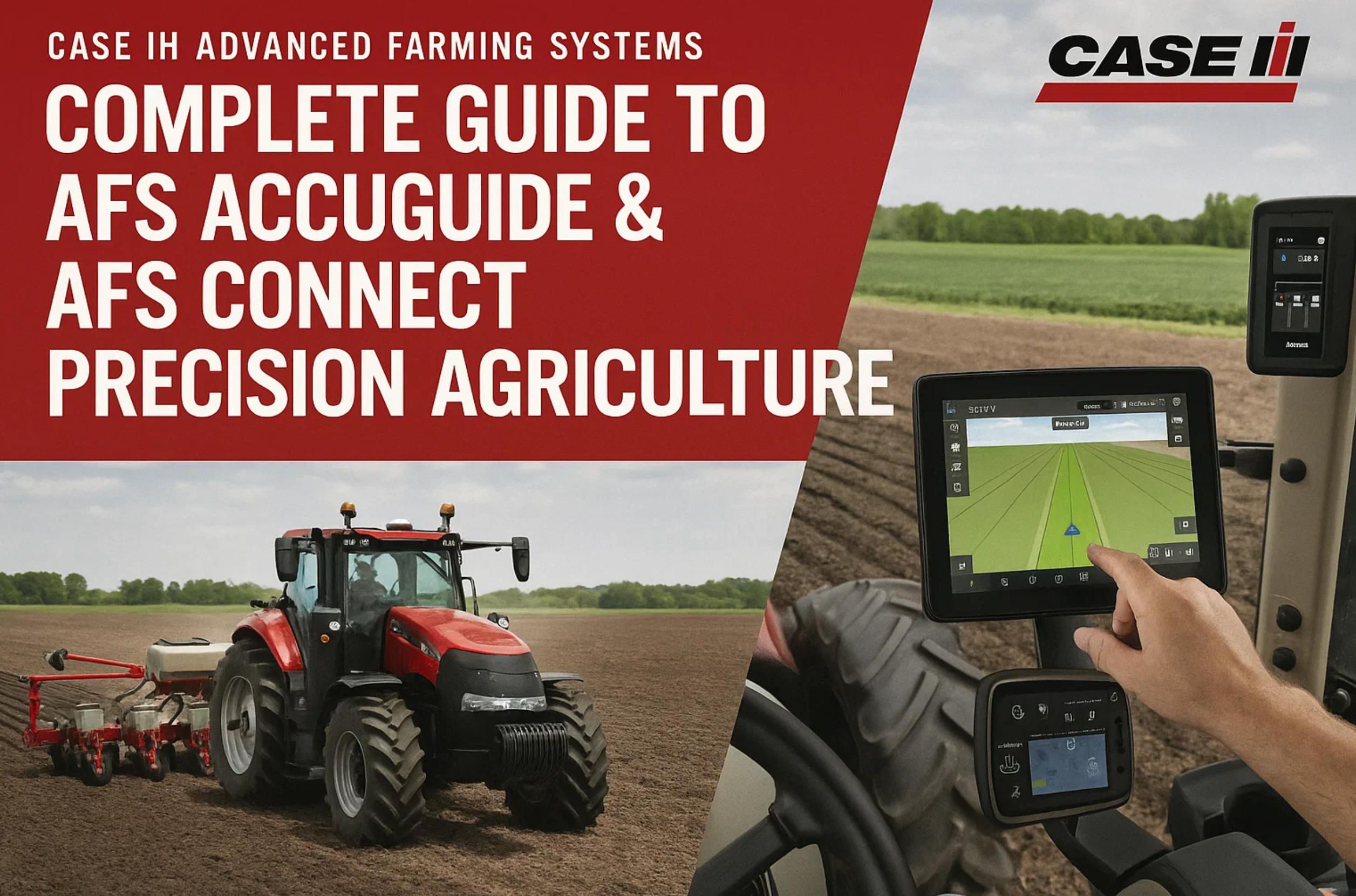
Case IH Advanced Farming Systems: Integrated Precision Agriculture Excellence
Case IH established Advanced Farming Systems (AFS) in 1994 as one of the earliest integrated precision agriculture platforms from a major equipment manufacturer. The company pioneered factory-installed guidance systems, yield monitoring integration, and comprehensive precision agriculture packages delivered as complete solutions rather than aftermarket additions. This early commitment positioned Case IH as a precision agriculture leader, building extensive installed base and operational experience over three decades.
CNH Industrial, Case IH's parent corporation, acquired Raven Industries in 2021 for $2.1 billion, combining Case IH's integrated precision agriculture platform with Raven's application control expertise and emerging autonomous technologies. This acquisition accelerated AFS development, particularly in application management, connectivity solutions, and autonomous equipment capabilities. The integration creates synergies where Case IH equipment design coordinates with advanced precision agriculture technology from initial engineering rather than adapting aftermarket solutions to existing machines.
Case IH AFS holds significant market share in North American row crop agriculture, particularly in corn and soybean production regions where Case IH equipment dominates. The brand's strong presence in large-scale commercial agriculture positions AFS as the precision agriculture standard for operations running primarily Case IH equipment fleets. While competitors like John Deere command larger overall market shares, Case IH maintains loyal customer bases appreciating the brand's focus on professional agriculture and productivity-oriented design philosophy.
The AFS ecosystem encompasses multiple components working as integrated systems: AFS AccuGuide automated steering maintaining precise paths with RTK accuracy, AFS Connect telemetry platform providing real-time equipment monitoring and remote support, AFS Pro Series displays serving as operator interfaces and system command centers, AFS receivers delivering positioning data across accuracy tiers, and extensive implement integration enabling comprehensive precision agriculture across all field operations.
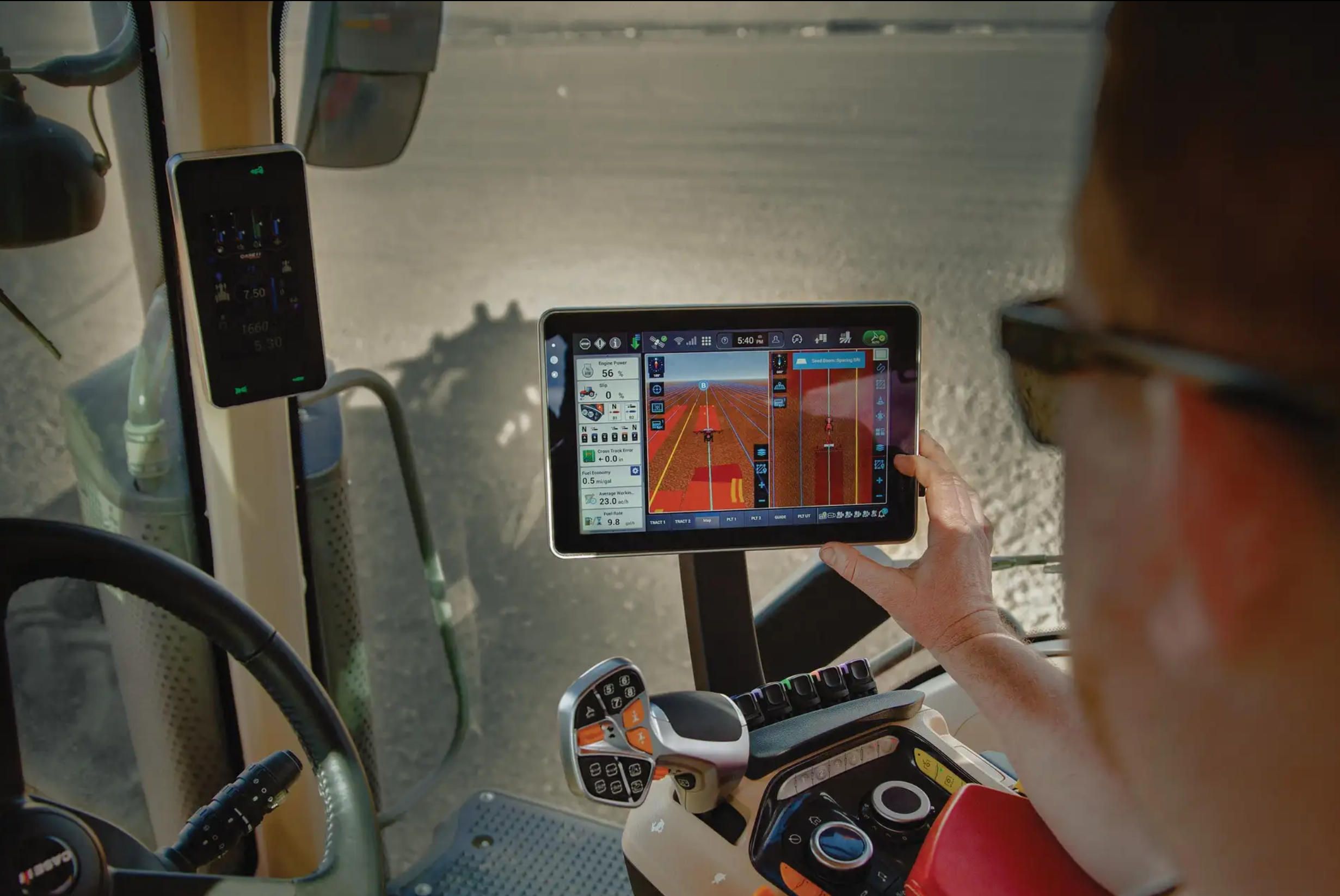
AFS AccuGuide: Precision Automated Steering
AFS AccuGuide represents Case IH's flagship automated steering technology, providing hands-free tractor guidance with accuracy levels spanning basic WAAS corrections through premium RTK repeatability. The system integrates deeply with Case IH equipment through factory installation, delivering seamless operation and optimal performance matched to specific tractor models.
System Architecture and Components
Integrated Hydraulic Steering:
Case IH engineers AFS AccuGuide steering systems directly into tractor hydraulic circuits during manufacturing, providing the tightest integration possible. Factory installation positions steering valves, controllers, and wiring optimally for each tractor model, eliminating aftermarket compromises from space constraints, routing limitations, or component placement trade-offs.
The integrated approach delivers superior steering precision compared to aftermarket systems. Direct hydraulic integration provides faster response times, smoother steering actuation, and more precise control authority. Factory calibration ensures steering parameters match each tractor model's specific characteristics including wheelbase, steering geometry, hydraulic capacity, and weight distribution.
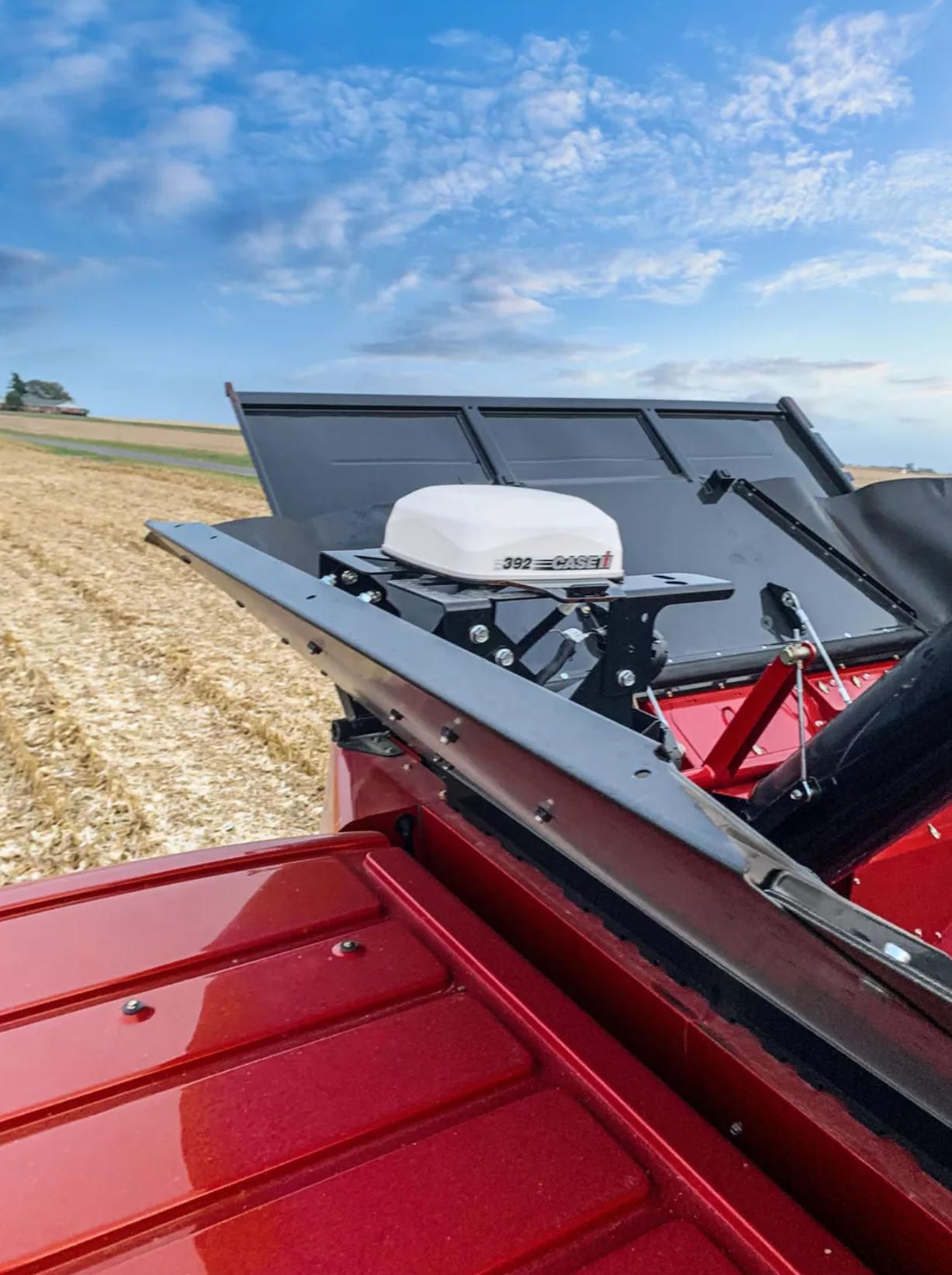
AFS Receivers and Positioning:
Case IH offers multiple receiver models supporting different accuracy tiers and correction services:
AFS Pro 300 Receiver - Entry-level positioning supporting WAAS and EGNOS free corrections delivering sub-meter accuracy suitable for tillage and broadcast applications. The receiver tracks GPS and GLONASS constellations providing basic positioning without subscription costs.
Technical Specifications:
- Satellite Systems: GPS L1, GLONASS L1
- Channels: 72 simultaneous
- Update Rate: 5 Hz position output
- Correction Support: WAAS, EGNOS, SBAS
- Accuracy: 30-60 cm with SBAS corrections
- Initialization Time: 45-90 seconds
- Operating Temperature: -40°C to +75°C
- Power: 9-32 VDC, 8W typical
- Dimensions: 165 mm x 135 mm x 55 mm
- Weight: 0.7 kg
AFS Pro 600 Receiver - Mid-tier receiver supporting RTX satellite corrections delivering 10-15 cm pass-to-pass accuracy without local base stations. This accuracy level suits most row crop operations including planting, fertilizer application, and general field work.
Technical Specifications:
- Satellite Systems: GPS L1/L2, GLONASS L1/L2, Galileo E1/E5a
- Channels: 226 simultaneous across all constellations
- Update Rate: 10 Hz position output
- Correction Support: RTX via satellite, WAAS, RTK-capable
- Accuracy: 10-15 cm pass-to-pass with RTX, 2.5 cm with RTK
- Convergence Time: 15-25 minutes for full RTX accuracy
- Operating Temperature: -40°C to +85°C
- Power: 9-32 VDC, 12W typical
- Dimensions: 175 mm x 145 mm x 60 mm
- Weight: 0.9 kg
- Additional Features: Built-in radio modem for RTK corrections
AFS Pro 700 Receiver - Premium receiver supporting all correction services including RTK with fastest convergence times and highest accuracy. This receiver serves operations requiring 2.5 cm repeatability for controlled traffic farming, specialty crops, or year-over-year precision applications.
Technical Specifications:
- Satellite Systems: GPS L1/L2/L5, GLONASS L1/L2, Galileo E1/E5a/E5b, BeiDou B1/B2/B3
- Channels: 480 simultaneous tracking all visible satellites
- Update Rate: 20 Hz position output
- Correction Support: All services (WAAS, RTX, RTK, NTRIP)
- Accuracy: 2.5 cm repeatable with RTK, 10 cm with RTX
- Convergence Time: <10 minutes RTX, instant RTK lock
- Operating Temperature: -40°C to +85°C
- Power: 9-32 VDC, 15W typical
- Dimensions: 185 mm x 155 mm x 65 mm
- Weight: 1.1 kg
- Additional Features: Dual-frequency radio, NTRIP client, terrain compensation IMU
Correction Service Options
Free WAAS/EGNOS Corrections:
Government-provided satellite augmentation systems deliver basic corrections improving GPS accuracy from 5-10 meters to 30-60 centimeters. This free service requires no subscriptions, suiting operations prioritizing cost minimization over maximum precision. WAAS coverage spans North America while EGNOS serves Europe.
The accuracy suffices for primary tillage, broadcast fertilizer application, and general field operations where precise path following isn't critical. However, WAAS accuracy proves inadequate for planting, row crop cultivation, or operations requiring year-over-year repeatability.
RTX Satellite Corrections:
Trimble's RTX satellite-delivered corrections provide 10-15 cm pass-to-pass accuracy without requiring local base stations or cellular connectivity. The service operates globally wherever satellite visibility exists, making it suitable for operations spanning large geographic areas or working in locations without RTK network coverage.
RTX corrections require 15-25 minutes convergence time after receiver startup to achieve full accuracy. During convergence, accuracy gradually improves from meter-level to final 10-15 cm performance. This convergence delay requires planning - operators should power systems on during morning equipment preparation, allowing convergence completion before field entry.
Annual RTX subscription costs range $1,800-$2,400 per receiver depending on purchased service level and regional pricing. Case IH often bundles RTX subscriptions with equipment purchases or offers multi-year discounts for fleet implementations.
RTK Corrections:
Real-Time Kinematic corrections deliver the highest accuracy at 2.5 cm repeatable positioning. RTK requires either owning and maintaining a local base station broadcasting corrections via radio, or subscribing to regional RTK correction networks transmitting via cellular connections.
RTK provides instant accuracy upon signal lock - no convergence wait occurs. This immediate availability benefits operations with multiple short field sessions or frequent equipment repositioning. The 2.5 cm repeatability enables controlled traffic farming, precision cultivation, specialty crop production, and applications demanding year-over-year path following.
Base station ownership costs $8,000-$12,000 for hardware plus ongoing cellular connectivity ($300-$600 annually) if using NTRIP internet distribution. Alternatively, RTK network subscriptions cost $1,500-$3,000 per receiver annually depending on provider and coverage area.
AFS AccuGuide Performance Characteristics
Steering Precision:
Case IH publishes AFS AccuGuide steering accuracy specifications based on correction service employed:
- WAAS corrections: 12-18 inch pass-to-pass accuracy
- RTX corrections: 4-6 inch pass-to-pass accuracy
- RTK corrections: 1 inch (2.5 cm) repeatable accuracy
Real-world performance testing by Iowa State University Agricultural Engineering Department confirmed Case IH achieves published specifications under normal field conditions. The research documented AFS AccuGuide with RTK corrections maintaining paths within ±1 inch across multiple passes, matching or exceeding competitive automated steering systems.
Terrain Compensation:
Premium AFS Pro 700 receivers include integrated inertial measurement units (IMU) providing terrain compensation on sloped ground. The IMU measures tractor pitch, roll, and yaw, allowing steering algorithms to adjust for implement position variations caused by terrain.
On level ground, the GNSS antenna position accurately represents implement ground contact point. However, slopes create positional offsets - on a 20-degree slope with antenna mounted 3 meters above ground, the horizontal offset reaches 1 meter. Terrain compensation corrects these offsets maintaining accurate implement positioning regardless of terrain.
The technology proves essential for operations in rolling terrain, hill country farming, or contour tillage following elevation curves. Without compensation, implements drift downslope or overshoot target paths when climbing grades. Terrain compensation maintains ±2.5 cm accuracy on slopes up to 35 degrees where uncorrected systems experience 30-50 cm errors.
Integration with Case IH Equipment
Factory Installation Quality:
Case IH installs AFS AccuGuide during tractor manufacturing, integrating components optimally within equipment design. Antenna mounting locations provide unobstructed sky view while maintaining structural integrity. Wiring harnesses route through protected channels rather than exposed external mounting. Hydraulic steering valves install in engineered locations with proper flow capacity and pressure ratings.
The factory approach eliminates common aftermarket installation issues including inadequate wire protection, suboptimal antenna placement, or hydraulic integration causing pressure drops or flow restrictions. Case IH validates complete system operation before tractors leave the factory, ensuring reliable performance from first use.
Tractor Model Optimization:
Case IH calibrates AFS AccuGuide specifically for each tractor model accounting for wheelbase, steering geometry, weight distribution, and hydraulic characteristics. A Steiger 620 articulated tractor receives different steering parameters than a Puma 240 conventional tractor despite using identical AFS components. This model-specific optimization delivers better steering performance than universal aftermarket systems applying generic parameters across all equipment.
Power and Performance Integration:
AFS AccuGuide integrates with Case IH's Efficient Power management systems, coordinating steering commands with engine load, transmission state, and implement operations. When planting or spraying requires consistent ground speed, the system adjusts engine power and transmission ratio maintaining speed while executing steering maneuvers. This coordination ensures uniform seed spacing and application rates throughout fields including during turns and speed transitions.
AFS Pro Series Displays: Operator Ground Control Interfaces
Case IH offers two primary display models serving as operator interfaces and system command centers for AFS precision agriculture: AFS Pro 700 and AFS Pro 1200. Both displays run identical software maintaining interface consistency across equipment, with the 1200 model adding enhanced screen size and processing capability.

AFS Pro 700 Display
The AFS Pro 700 serves as Case IH's standard precision agriculture display, installed in most tractors, combines, and sprayers requiring comprehensive precision agriculture functionality. The 7-inch touchscreen provides sufficient screen area for guidance, implement control, and operational monitoring in a compact package.
Technical Specifications:
- Screen Size: 7 inches diagonal
- Resolution: 800 x 480 pixels (WVGA)
- Display Technology: TFT LCD with LED backlight
- Brightness: 800 nits with automatic dimming
- Touchscreen: Resistive multi-touch, glove-compatible
- Processor: Dual-core ARM Cortex-A9 at 1.0 GHz
- Memory: 2 GB RAM, 16 GB storage
- Operating Temperature: -30°C to +70°C
- Storage Temperature: -40°C to +85°C
- Ingress Protection: IP65 (dust-protected, water spray resistant)
- Power Input: 9-32 VDC with reverse polarity protection
- Power Consumption: 12W typical, 18W maximum
- Dimensions: 210 mm x 145 mm x 50 mm
- Weight: 0.9 kg
- Mounting: VESA 75mm pattern, custom Case IH brackets
Connectivity:
- USB 2.0: Two ports for data transfer
- Ethernet: 10/100 Mbps for network connectivity
- CAN Bus: ISO 11783 (ISOBUS) interface
- Serial: RS-232 for legacy compatibility
- Wi-Fi: 802.11 b/g/n 2.4 GHz
- Bluetooth: 4.0 for wireless accessories
Core Capabilities:
The AFS Pro 700 manages all essential precision agriculture functions including guidance display and control, section control for implements, variable-rate application execution, yield monitoring, and operational documentation. The display interfaces with AFS AccuGuide steering systems showing guidance lines, path deviations, and steering status. Manual guidance presents visual light bar indicators while automated guidance displays system status and allows operator adjustments to guidance parameters.
Section control functionality manages up to 64 independent implement sections, automatically activating and deactivating sections based on coverage history. The system prevents over-application on field boundaries, point rows, and previously covered areas. Variable-rate control adjusts seed populations, fertilizer rates, or chemical applications based on prescription maps, responding to zone changes within 0.5 seconds ensuring accurate application.
ISOBUS Universal Terminal certification enables the AFS Pro 700 to control ISOBUS-compliant implements from any manufacturer. This standards-based compatibility allows farmers to utilize Case IH displays with competitive implements, reducing cab display proliferation and simplifying operator training. The display presents manufacturer-specific implement controls through standardized interfaces ensuring consistent operation regardless of implement brand.
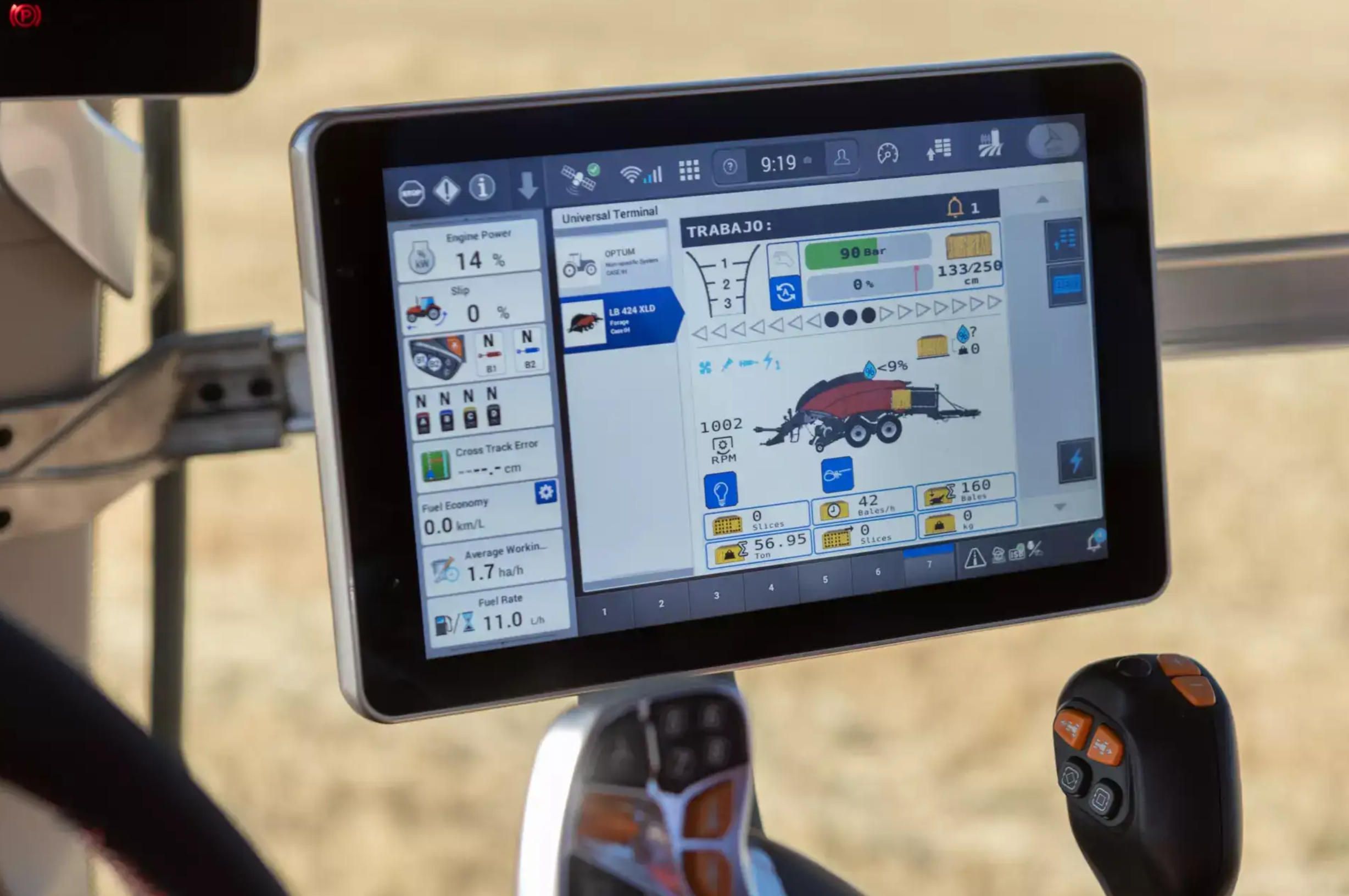
AFS Pro 1200 Display
The AFS Pro 1200 provides premium display capability with larger screen size, enhanced processing power, and advanced features targeting professional agriculture operations and custom contractors managing complex precision agriculture implementations.
Technical Specifications:
- Screen Size: 12.1 inches diagonal
- Resolution: 1280 x 800 pixels (WXGA)
- Display Technology: IPS LCD for wide viewing angles
- Brightness: 1000 nits with ambient light sensor
- Touchscreen: Capacitive multi-touch with palm rejection
- Processor: Quad-core ARM Cortex-A17 at 1.8 GHz
- Graphics: Mali-T764 GPU
- Memory: 4 GB RAM, 64 GB SSD storage
- Operating Temperature: -30°C to +70°C
- Storage Temperature: -40°C to +85°C
- Ingress Protection: IP67 (dust-tight, water immersion resistant)
- Power Input: 9-32 VDC with surge protection
- Power Consumption: 20W typical, 30W maximum
- Dimensions: 330 mm x 220 mm x 55 mm
- Weight: 1.7 kg
- Mounting: VESA 100mm pattern, reinforced brackets
Enhanced Connectivity:
- USB 3.0: Four high-speed ports
- Gigabit Ethernet: 1000 Mbps for rapid data transfer
- Dual CAN Bus: Redundant ISOBUS interfaces
- Wi-Fi 5: 802.11ac dual-band
- Bluetooth 4.2: Extended range
- Video Input: Camera support for implement monitoring
Premium Features:
The AFS Pro 1200 includes capabilities exceeding the Pro 700 model. Split-screen display allows simultaneously viewing guidance on one half while monitoring yield data, application rates, or implement status on the other half. This multi-pane capability eliminates constant screen switching, allowing operators to maintain awareness of multiple parameters simultaneously during operations.
Enhanced processing power enables smooth rendering of high-resolution prescription maps with thousands of management zones. The Mali GPU accelerates graphics operations allowing overlay of multiple data layers - soil maps, yield history, elevation contours, application zones - simultaneously without performance degradation. Operators zoom and pan detailed maps instantly without lag or delayed rendering.
Expanded storage capacity accommodates larger operations managing hundreds of fields across multiple farms. The 64 GB solid-state storage provides space for decades of operational history, extensive prescription libraries, and high-resolution imagery without requiring external storage or frequent data archiving.
Video input support enables connecting implement cameras showing real-time views of planter row units, sprayer boom sections, or combine grain tank fills. The display presents camera feeds alongside operational data, allowing operators to monitor equipment visually while maintaining situational awareness of guidance and application parameters.
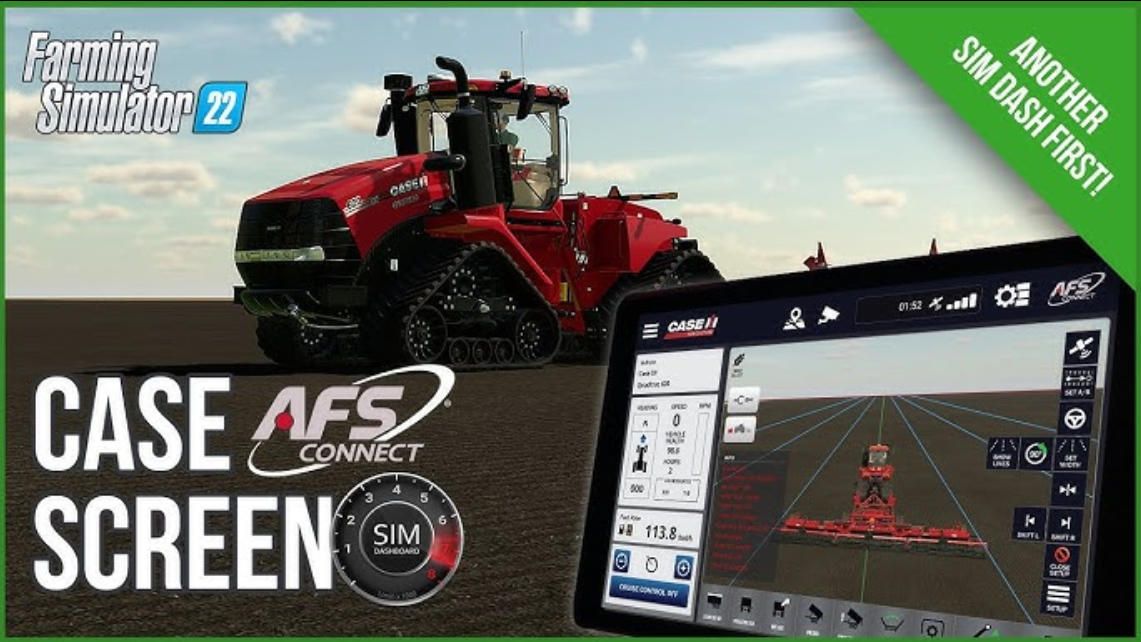
AFS Connect: Telemetry and Fleet Management Platform
AFS Connect serves as Case IH's cloud-based telemetry platform providing real-time equipment monitoring, remote support capabilities, automatic data synchronization, and fleet management tools. The system connects Case IH equipment to secure cloud servers through cellular modems, enabling continuous connectivity and data flow between machines and farm offices.
System Architecture
Cellular Connectivity:
AFS Connect utilizes dual-carrier cellular modems supporting multiple network providers. The modems automatically select the strongest available signal, maximizing connectivity across diverse geographic regions and carrier coverage areas. The dual-carrier approach provides redundancy - if one carrier experiences outages or weak coverage, the system switches to alternative networks maintaining connectivity.
Data transmission occurs through encrypted cellular connections protecting operational information privacy and preventing unauthorized access. The encryption ensures data security meeting agricultural industry standards and satisfying farmer concerns about competitive information exposure or technology provider data usage.
When equipment operates in areas without cellular coverage, AFS Connect queues data locally within display storage. Upon connectivity restoration, queued data uploads automatically ensuring complete information capture without manual intervention or gaps in operational records. This store-and-forward architecture accommodates the reality that rural agricultural areas often have inconsistent cellular coverage.
Real-Time Fleet Monitoring
Equipment Location and Status:
AFS Connect displays real-time positions for all connected Case IH equipment on interactive maps accessible through web browsers or mobile applications. Farm managers view current equipment locations, operational status (working, traveling, idle), and basic performance metrics without phone calls, radio communication, or physical field inspection.
The mapping interface supports multiple view modes including satellite imagery, topographic maps, and field boundary overlays. Managers zoom from farm-wide overviews showing all equipment locations to field-level detail examining individual machine positions within specific fields. Historical track playback shows where equipment traveled over previous days, weeks, or entire seasons.
Location tracking delivers multiple operational benefits beyond simple awareness. Managers coordinate equipment avoiding conflicts when multiple machines work proximate fields. Equipment theft recovery improves significantly with real-time GPS tracking - stolen equipment is located and recovered faster. Some agricultural insurance providers offer premium discounts for operations utilizing GPS tracking on high-value equipment.
Operational Performance Monitoring:
Beyond position, AFS Connect monitors operational parameters including ground speed, fuel consumption, engine hours, area covered, and application rates. The system distinguishes productive field time from non-productive activities like transport, refueling, or idle periods. This visibility enables identifying efficiency opportunities, documenting productive hours for cost allocation, and recognizing underutilized equipment or operator performance variations.
For harvest equipment, AFS Connect displays real-time yield data, moisture readings, and harvest progress. Managers monitor combine productivity, track grain cart coordination, and identify fields requiring additional harvest capacity allocation. The real-time visibility enables dynamic resource reallocation responding to actual field conditions rather than executing static predetermined plans.
Fuel consumption monitoring tracks usage patterns identifying equipment requiring service, operators with inefficient practices, or operational conditions consuming excessive fuel. The data supports fuel budgeting, identifies opportunities for efficiency improvements, and documents consumption for tax reporting or carbon footprint calculations.
Alert and Notification System:
Configurable alerts notify managers when important events occur or when parameters exceed defined thresholds. Geofence alerts trigger when equipment enters or exits designated areas, supporting security monitoring and verifying operators work in assigned fields. Speed alerts identify equipment traveling excessively fast, potentially indicating road transport rather than field operations or identifying operators requiring speed management feedback.
Idle time alerts flag equipment sitting unproductively beyond specified durations, revealing inefficiencies or problems requiring investigation. Maintenance alerts notify managers when equipment approaches service intervals for oil changes, filter replacements, or scheduled maintenance, preventing service delays and supporting proactive maintenance planning.
Operational alerts notify about application rate deviations, coverage gaps, equipment faults, or system errors requiring attention. The multi-channel notification system sends alerts via email, SMS text messages, or mobile app push notifications ensuring timely manager awareness regardless of location or activity.
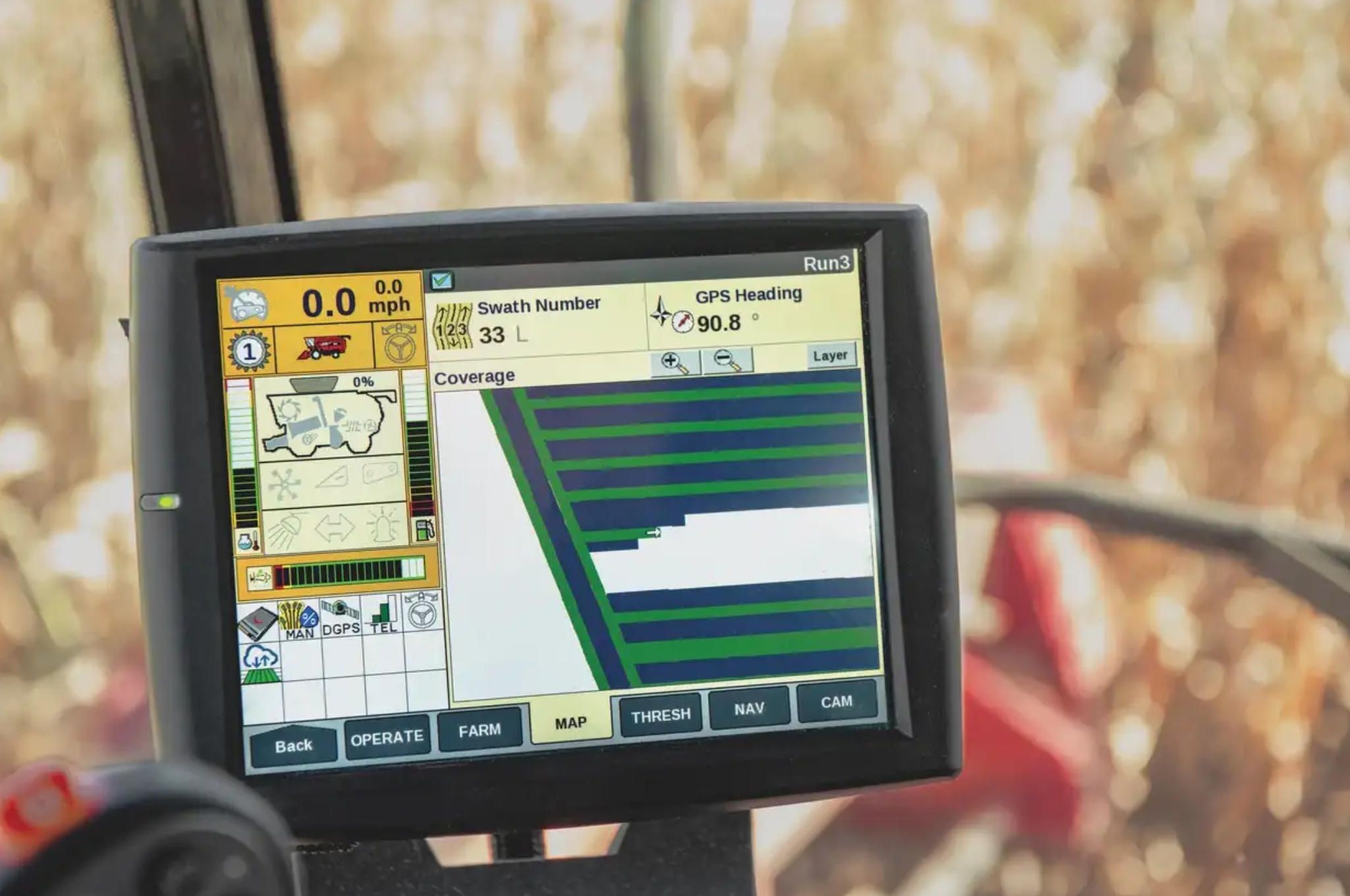
Automatic Data Synchronization
Wireless Data Upload:
AFS Connect automatically uploads operational data from AFS Pro displays to cloud storage eliminating manual USB data transfer. Coverage maps, as-applied rate maps, yield information, and operational summaries populate the cloud database continuously during field operations when cellular connectivity exists. The automatic synchronization reduces administrative workload, ensures consistent data capture, and accelerates data availability for analysis and decision-making.
The system uploads data incrementally rather than waiting for operation completion. As tractors complete field sections or as combines fill grain tanks, data transfers occur immediately. This continuous upload provides near-real-time operational visibility rather than delayed information available only after equipment returns to farmsteads.
Bidirectional Synchronization:
AFS Connect supports bidirectional data flow enabling wireless prescription map downloads and system configuration updates. Agronomists or managers create or modify prescriptions in office software, upload to AFS Connect, and prescriptions automatically transfer to AFS Pro displays when equipment connects. This wireless workflow eliminates USB drive handling, reduces errors from wrong files or outdated prescriptions, and enables rapid operational adjustments responding to changing field conditions.
System configuration updates including display settings, guidance line adjustments, or application control parameters propagate wirelessly to equipment. Managers implement consistent settings across equipment fleets without individually configuring each machine manually. Software updates deploy wirelessly ensuring all equipment runs current versions without dealer service visits or operator intervention.
Remote Support and Diagnostics
Technical Support Sessions:
AFS Connect enables remote technical support where Case IH dealers or CNH technical specialists connect to AFS Pro displays through secure internet sessions. Support staff view operator screens exactly as they appear in equipment cabs, diagnose configuration issues, adjust settings, and guide operators through procedures without farm visits. The remote capability dramatically reduces equipment downtime during critical operational windows when every hour matters.
Support sessions occur through encrypted connections requiring operator approval before establishing connections. Operators maintain control authority - they can terminate sessions instantly if uncomfortable with remote access or if immediate manual control becomes necessary. The security protocols ensure remote support enhances rather than compromises operational control and data privacy.
Diagnostic Data Collection:
AFS Connect continuously uploads diagnostic information including system logs, error reports, and performance metrics. When operators contact support, technicians access relevant diagnostic data before conversations begin, accelerating troubleshooting and issue resolution. The proactive data collection enables identifying developing problems before they cause operational failures, supporting preventive maintenance and minimizing surprise breakdowns during peak seasons.
Aggregate diagnostic data across Case IH's global installed base informs product development and quality improvement initiatives. CNH analyzes failure patterns, identifies design weaknesses, and implements improvements in subsequent equipment generations. The data-driven approach accelerates quality enhancement cycles compared to relying solely on warranty claims or dealer feedback.
Integration with Farm Management Software
Third-Party Platform Connectivity:
AFS Connect integrates with major farm management software platforms including Climate FieldView, Granular, SST Software, and others through API connections and standard data formats. Operations using external agronomic platforms synchronize data between AFS Connect and these systems maintaining information consistency and eliminating duplicate entry.
The integration supports bidirectional workflows. Prescription maps created in agronomic software automatically transfer to AFS Connect for wireless delivery to equipment. Conversely, as-applied maps and operational documentation flow from AFS Connect back to farm management platforms for analysis, record-keeping, and agronomic evaluation. The data synchronization operates automatically once configured, requiring no ongoing manual file transfers or data manipulation.
Data Export Capabilities:
AFS Connect exports data in industry-standard formats including ISO-XML, Shapefile, GeoTIFF, and CSV ensuring broad compatibility. Farmers access their operational data regardless of future software decisions, preventing vendor lock-in and maintaining data portability. The open format support aligns with farmer preferences for data ownership and flexibility in technology choices.
Custom export templates accommodate specific reporting requirements for crop insurance, landlord reporting, regulatory compliance, or internal record-keeping. The system generates formatted reports automating routine administrative tasks and ensuring consistent documentation across operations.
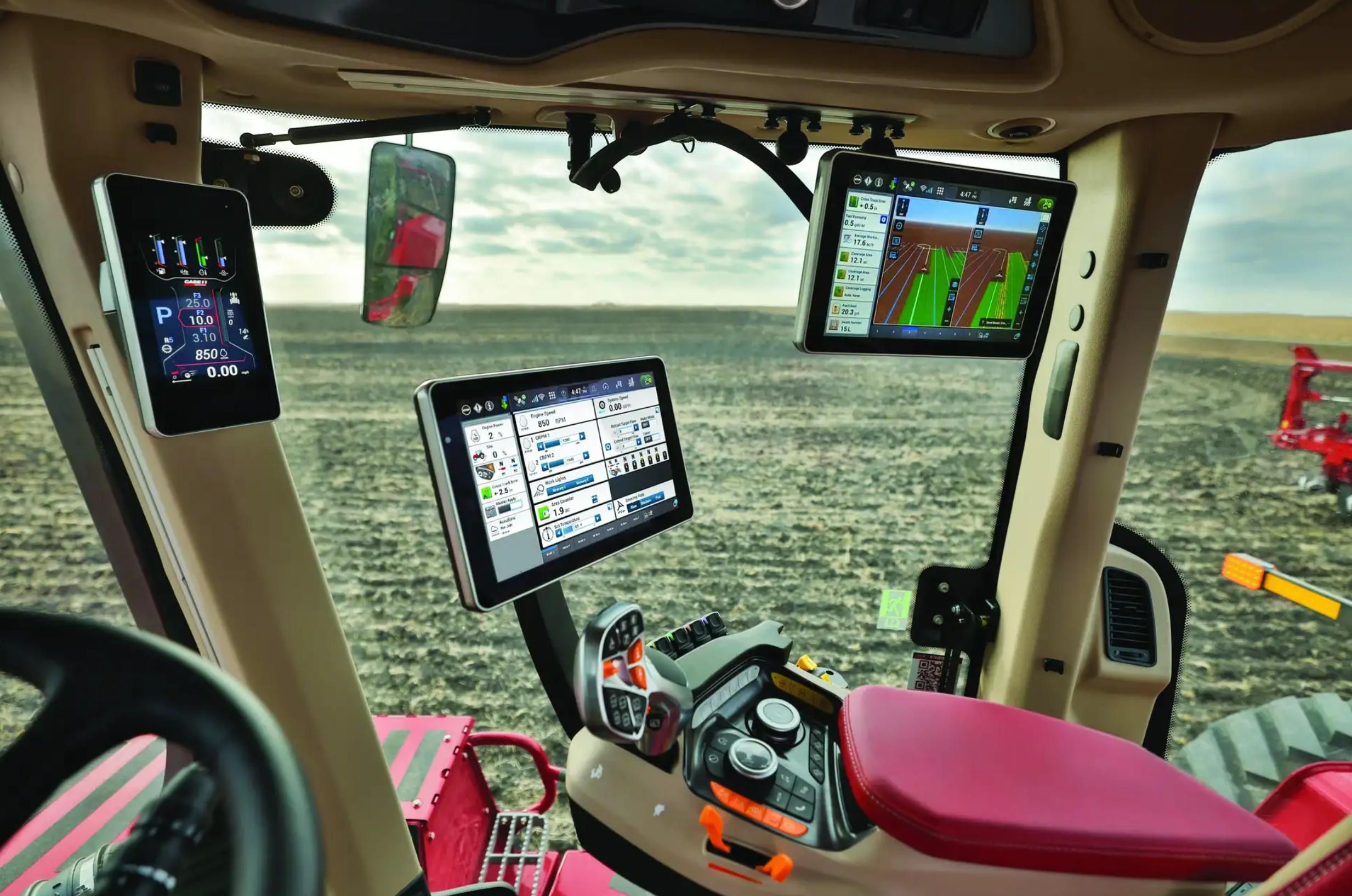
Advanced AFS Features and Technologies
Case IH implements several advanced features differentiating AFS from competitive precision agriculture platforms.
AFS Repeat Technology
AFS Repeat provides enhanced RTK repeatability specifically engineered for controlled traffic farming and year-over-year precision applications. The technology maintains 2.5 cm positioning accuracy across seasons, enabling equipment to follow identical paths year after year.
Controlled traffic farming concentrates equipment traffic to permanent lanes, leaving crop zones undisturbed by compaction. Research demonstrates yield increases of 5-15% through controlled traffic management as root systems develop more extensively in uncompacted growing zones. Water infiltration improves reducing runoff and erosion. Soil structure enhancement supports increased biological activity and organic matter accumulation.
AFS Repeat enables precision applications impossible with standard guidance including:
Tile Line Following - Equipment precisely follows drainage tile locations during tillage or cultivation, preventing tile damage from deep implements. The repeatability allows establishing permanent traffic lanes aligned with tile spacing, minimizing compaction over drain lines.
Nutrient Banding - Fertilizer application precisely places nutrients 5-7 cm offset from crop rows, maximizing plant access while minimizing nutrient losses to leaching or volatilization. The precision requires year-over-year repeatability ensuring planters return to exact locations where previous applications occurred.
Mechanical Cultivation - Cultivators operate within 5 cm of crop rows removing weeds without plant damage. The precision enables organic production systems relying on mechanical weed control rather than herbicide applications.
AutoTrac Turn Automation
Case IH AutoTrac Turn Automation manages headland sequences automatically, executing end-of-row maneuvers without operator input. When equipment reaches field boundaries, the system automatically reduces ground speed to preset turning speed, lifts implements to transport position, calculates and executes optimal turn paths, lowers implements when positioned for the next pass, and resumes field speed automatically.
This automation eliminates repetitive operator inputs during long field days, reduces fatigue, and ensures consistent headland execution. Operators initially program turn sequences defining implement lift points, speed transitions, and path patterns. The system then replicates these sequences identically on every pass throughout the field.
Turn automation proves particularly valuable on large-scale operations where operators make hundreds of turns daily during planting or harvest. The automation reduces operator cognitive load, allowing focus on implement monitoring and equipment management rather than repetitive steering and control inputs. Less experienced operators execute professional-quality headland maneuvers through automated assistance, reducing training requirements and improving operational consistency.
AFS Harvest Command
AFS Harvest Command provides harvest automation and optimization for Case IH combines. The system automatically adjusts combine settings including threshing cylinder speed, concave clearance, fan speed, and chaffer/sieve openings based on crop conditions and performance feedback.
Sensors monitor grain loss, grain quality, rotor load, and machine performance. Control algorithms adjust settings maintaining optimal separation, minimizing grain loss, and maximizing grain quality while maintaining target harvest speeds. The automation delivers consistent harvest quality across varying field conditions without constant operator adjustment.
Harvest Command reduces operator workload during long harvest days. Combine operators monitor overall machine performance and respond to alerts rather than continuously adjusting individual settings. The automation particularly benefits less experienced operators who achieve professional-level harvest quality through intelligent system assistance.
Machine Sync
Case IH Machine Sync coordinates movement between harvest equipment - combines and grain carts - automating grain transfer operations. The system tracks combine positions, anticipates when unloading is needed based on grain tank fill levels, and directs grain cart tractors to optimal catch positions automatically.
During unloading, Machine Sync adjusts grain cart speed and position maintaining alignment with combine discharge spout. The coordination allows combines to continue harvesting during unloading rather than stopping or slowing significantly. Harvest efficiency improves by 10-15% through elimination of coordination delays and optimal machine positioning.
The technology eliminates one operator from harvest crews without reducing capacity - autonomous grain carts handle transport while human operators focus solely on combine management. Labor savings accumulate particularly during extended harvest campaigns running multiple weeks.
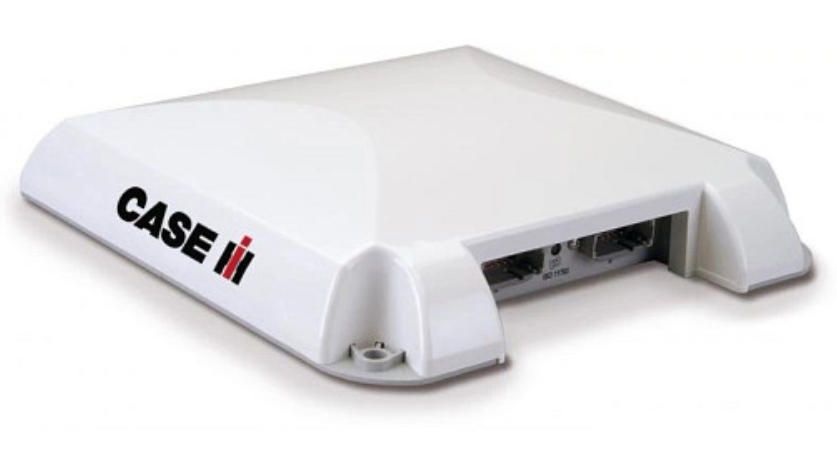
Case IH AFS Integration with Competitive Systems
While Case IH designs AFS primarily for integrated implementation on Case IH equipment, the system maintains interoperability with competitive precision agriculture platforms and implements.
Universal ISOBUS Compatibility
AFS Pro displays function as certified ISOBUS Universal Terminals complying with ISO 11783 standards. This certification ensures compatibility with ISOBUS-compliant implements from any manufacturer worldwide. Farmers utilizing non-Case IH planters, sprayers, or application equipment control these implements through AFS displays rather than requiring manufacturer-specific terminals.
The ISOBUS implementation supports Task Controller functionality (TC-BAS, TC-GEO, TC-SC) managing section control and variable-rate application for compliant implements. Aux-N implement control provides access to hydraulic functions, setting adjustments, and implement monitoring through AFS interfaces regardless of implement manufacturer.
This standards-based compatibility allows operations to select implements based on agronomic performance and value rather than precision agriculture compatibility constraints. The universal terminal capability reduces cab display proliferation - one AFS display controls multiple diverse implements rather than requiring separate terminals for each equipment brand.
Aftermarket Guidance Integration
While AFS AccuGuide provides factory-integrated steering for Case IH equipment, the company supports aftermarket guidance system compatibility for customers preferring competitive solutions or operating mixed equipment fleets. Trimble, Topcon, and Ag Leader guidance systems integrate with Case IH equipment through ISOBUS and CAN bus connections.
Aftermarket guidance companies offer installation kits specifically designed for Case IH tractors, combining, and sprayers. These kits include model-specific mounting brackets, pre-terminated wiring harnesses, and hydraulic integration components simplifying installation and ensuring reliable operation. While not achieving the seamless integration depth of factory AFS AccuGuide systems, aftermarket solutions provide functional automated guidance with acceptable performance for most applications.
Operations running predominantly competitive equipment brands sometimes install aftermarket guidance on limited Case IH machines within their fleets, maintaining guidance system consistency across all equipment. This approach simplifies operator training, standardizes data formats, and consolidates precision agriculture support through single aftermarket suppliers rather than managing multiple manufacturer relationships.
CNH Raven Technology Integration
Following CNH's acquisition of Raven Industries, increasing integration occurs between AFS platforms and Raven technologies. Newer Case IH equipment includes provisions for Raven controller installation, factory wiring harnesses simplifying Raven integration, and AFS display software supporting enhanced Raven component communication.
This integration path allows Case IH equipment owners to combine AFS guidance and displays with Raven's advanced application control technologies including Field Hub controllers and Hawkeye individual nozzle monitoring. The synergy leverages strengths of both platforms - Case IH's equipment integration and guidance excellence combined with Raven's application control expertise.
The CNH-Raven relationship accelerates technology development as engineers from both organizations collaborate on integrated solutions. Farmers benefit from faster innovation cycles, better product integration, and access to best-in-class technologies regardless of which CNH brand originally developed them.
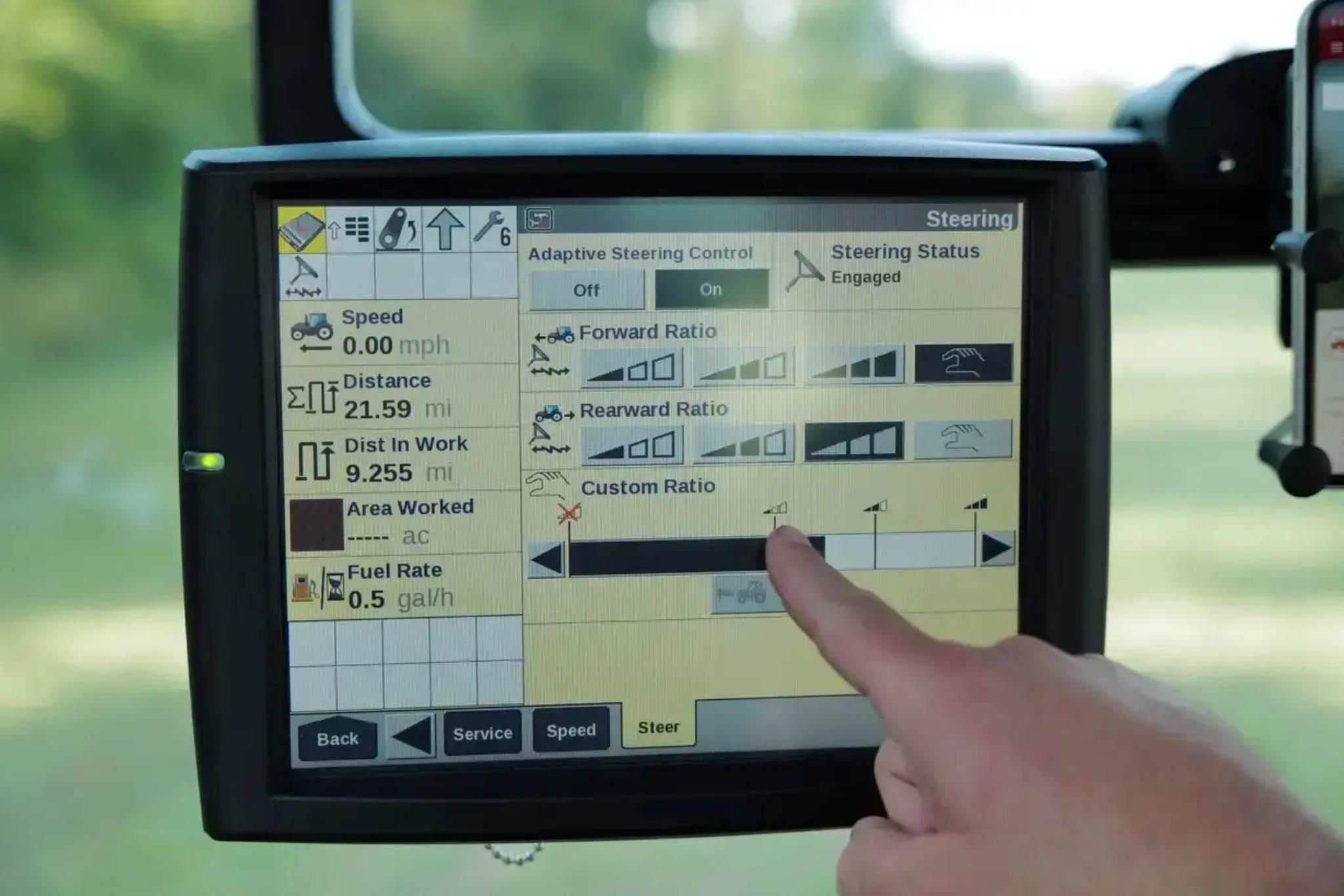
Real-World Performance and Economic Benefits
Independent research and farmer testimonials document measurable benefits from AFS system implementations across diverse agricultural operations.
Input Reduction and Cost Savings
According to research from Iowa State University Extension, farmers using AFS AccuGuide with section control reduce fertilizer and chemical over-application by 8-12% through overlap elimination. For a 2,000-acre operation applying $125 per acre in inputs annually, this represents $20,000-$30,000 in direct annual savings.
Precision planting using AFS AccuGuide with RTK accuracy reduces seed costs by eliminating doubles and skips. Research from Purdue University Agricultural Engineering Department documented that RTK-guided planting reduces seed usage by 3-5% while improving emergence uniformity and yield potential. For operations planting 2,000 acres of corn at $300 per acre seed cost, savings reach $18,000-$30,000 annually.
Fuel consumption decreases by 10-15% through more efficient field coverage, optimized turning patterns, and reduced overlap. A 2,500-acre operation consuming 12,000 gallons of diesel annually saves 1,200-1,800 gallons worth $4,500-$6,750 at typical fuel prices. Additional savings accrue from reduced engine hours and decreased mechanical wear on equipment.
Productivity and Efficiency Gains
AFS AccuGuide automated steering increases productivity by 25-35% measured in acres covered per hour. Operators maintain consistent speeds through entire fields including approaches to boundaries, during turns, and across varying terrain. Manual steering typically requires speed reductions approaching field edges or during complex maneuvers. Automated steering maintains optimal speeds throughout operations, compressing time requirements for field completion.
Extended operating hours represent another productivity dimension. Automated steering enables operators to work comfortably during darkness, dust conditions, or low visibility situations challenging manual steering. Many operations run 14-16 hour days during planting or harvest when using automated guidance versus 8-10 hours with manual operation. This productivity multiplication allows covering more acres with existing equipment or reduces machinery fleet size requirements.
Case studies from large-scale farms document labor efficiency improvements. One 8,000-acre Illinois corn and soybean operation implemented complete AFS systems across their equipment fleet in 2020. They reported completing spring planting 5 days faster than previous years despite 10% acreage increase, attributing acceleration to automated guidance enabling extended work days and consistent productivity regardless of conditions.
Yield Improvements
Precision agriculture delivers yield benefits beyond input cost reductions through improved crop management and optimized field operations.
Research published by Iowa State University documented that consistent seed spacing from AFS-guided precision planting increases corn yields by 3-6 bushels per acre compared to conventional planting. The uniform spacing reduces plant competition, improves light interception, and optimizes resource utilization. For a 2,000-acre corn operation, this represents 6,000-12,000 additional bushels worth $24,000-$48,000 annually at typical corn prices.
Controlled traffic farming utilizing AFS Repeat year-over-year repeatability shows yield increases of 5-12% according to multi-year studies across Midwest universities. The yield improvements result from reduced compaction in growing zones, improved soil structure, enhanced water infiltration, and optimized root development. A 2,500-acre soybean operation averaging 55 bushels per acre gains 2.75-6.6 bushels per acre worth $38,000-$91,000 annually at typical soybean prices.
Variable-rate fertilizer application optimizing nutrient placement based on soil characteristics and yield potential delivers 2-4% yield increases while often reducing total fertilizer usage. The dual benefit of increased yields and decreased input costs compounds economic returns. Research demonstrates well-executed variable-rate programs pay back prescription development costs within 1-2 years with continued benefits in subsequent seasons.
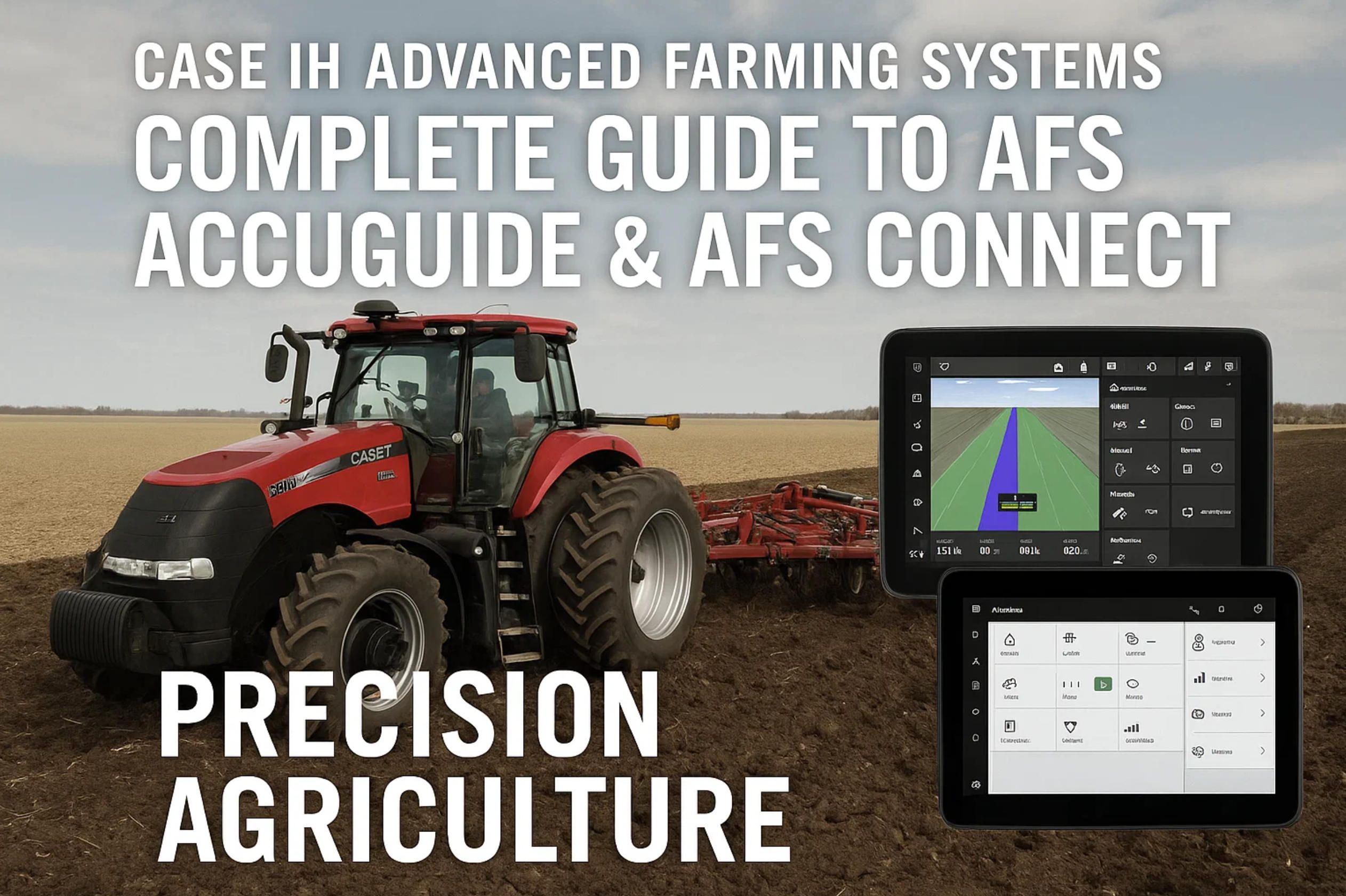
Operational Case Studies
Large-Scale Corn Operation - Illinois:
A 6,500-acre corn and soybean farm implemented comprehensive AFS systems including AccuGuide RTK steering, AFS Pro 1200 displays, and AFS Connect telemetry across 8 tractors and 3 combines in 2021. Total system investment reached $168,000. Results after three complete seasons:
- 11% reduction in herbicide costs through section control: $35,000 annual savings
- 9% reduction in fertilizer costs through variable-rate management: $48,000 savings
- 4.2 bushel per acre yield increase attributed to precision planting: $109,000 additional revenue
- 18% improvement in equipment productivity enabling operation expansion: 650 additional acres farmed
- Complete investment payback achieved in 22 months
- Continued annual benefits exceeding $190,000
The farm manager reported: "AFS systems transformed our operation from conventional farming to precision agriculture leader in our region. The factory integration eliminates compatibility issues we experienced with aftermarket systems previously. AFS Connect fleet monitoring improved our operational efficiency dramatically - we coordinate equipment better, respond to problems faster, and complete time-sensitive operations within narrower windows."
Custom Planting Service - Iowa:
A three-operator custom planting service covering 8,000 acres annually equipped planters with AFS AccuGuide RTK guidance, AFS Pro 700 displays, and precision planting monitoring. Investment totaled $87,000 across three units. Outcomes after two seasons:
- Ability to charge premium pricing ($8-12 per acre) for documented RTK precision planting
- Client retention improved from 72% to 91% due to precision service quality
- Planting capacity increased 28% through extended operating hours enabled by automated guidance
- As-applied planting maps providing liability protection and performance verification
- Annual revenue increase of $96,000 justifying technology investment within first year
- Second-year net benefit of $89,000 after accounting for ongoing subscription costs
The service owner stated: "AFS AccuGuide precision separates our planting service from competitors. Clients see documented proof of precise seed placement through as-applied maps showing singulation quality and population achievement. We plant later into evenings and earlier in mornings compared to manual operations, completing more acres daily with same crew size."
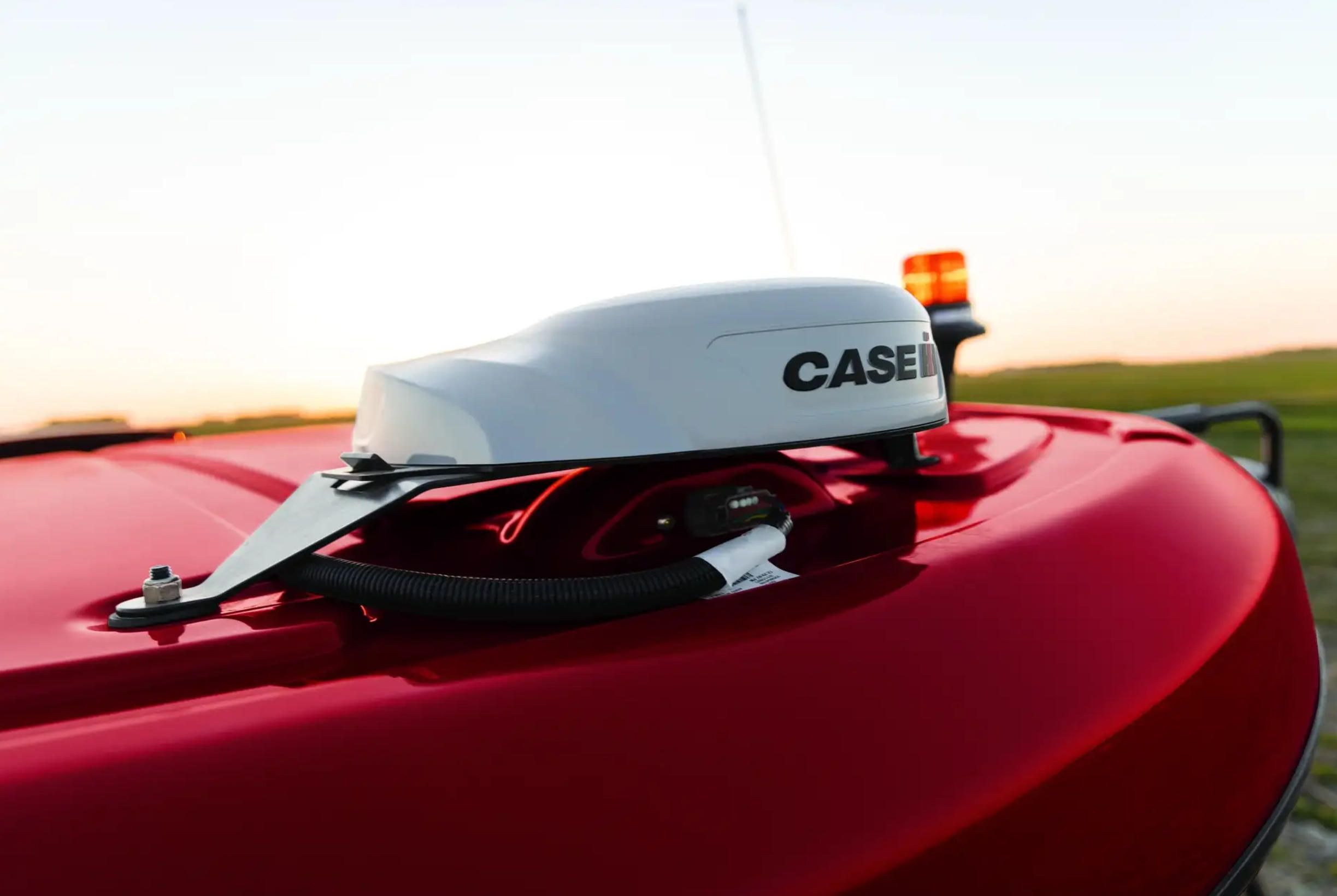
Controlled Traffic Farm - Minnesota:
A 4,200-acre farm implemented AFS Repeat controlled traffic farming in 2019, configuring permanent traffic lanes and purchasing equipment with track spacing matching traffic lane intervals. The five-year transition required substantial planning and equipment coordination. Results after complete system maturity:
- Yield increases averaging 7.3% across corn and soybeans: $128,000 annual benefit
- Fuel consumption reduced 14% through decreased tillage in crop zones: $11,000 savings
- Soil compaction measurements showing 65% reduction in growing zones
- Water infiltration improved 40% reducing erosion and runoff
- Equipment hours reduced 12% through targeted traffic management
- Long-term soil health improvements supporting sustainability goals
The farm's precision agriculture manager reported: "Controlled traffic farming represents precision agriculture's ultimate expression. AFS Repeat repeatability makes controlled traffic practical - we follow identical paths year after year within 1 inch accuracy. The initial transition required careful planning and equipment modifications, but yield benefits and soil health improvements justify the investment many times over."
Installation, Training, and Support
Successful AFS implementations require proper installation, comprehensive operator training, and access to competent ongoing support.
Factory Installation and Dealer Preparation
New Equipment:
Case IH installs AFS components during tractor and combine manufacturing for new equipment purchases. Factory installation ensures optimal component placement, proper wiring routing, complete system integration, and thorough quality validation before delivery. Operators receive equipment with AFS fully operational, calibrated, and ready for immediate field use.
Dealers complete final configuration during equipment delivery including field boundary setup, guidance line creation for customer fields, operator preference settings, and initial hands-on training. The dealer preparation ensures systems match specific farm operations and operator requirements before equipment enters service.
Retrofit Installation:
Existing Case IH equipment without factory AFS installation can be retrofitted with precision agriculture systems through dealer service departments. Retrofit kits include all components required for complete AFS functionality: displays, receivers, steering controllers, wiring harnesses, and mounting hardware.
Retrofit installation requires 12-20 hours depending on equipment model and system complexity. Experienced Case IH technicians complete installations in dealer shops or through mobile service calls to farm locations. The installation includes mounting components, routing wiring harnesses through equipment structures, integrating steering systems, configuring software, calibrating positioning and steering, and operator training.
Retrofit costs range $12,000-$22,000 depending on equipment model, chosen accuracy level, and regional labor rates. The investment enables existing equipment to access current AFS capabilities without complete equipment replacement, protecting capital investments and extending equipment useful life.
Operator Training Programs
Initial Training:
Case IH dealers provide comprehensive operator training during equipment delivery or system installation. Training sessions typically span 3-4 hours covering:
- System overview and component identification
- Display operation and menu navigation
- Guidance system setup and steering engagement
- Section control configuration and monitoring
- Variable-rate prescription loading and execution
- Data documentation and export procedures
- Troubleshooting common issues
- AFS Connect connectivity features
Quality dealers conduct training in equipment cabs with hands-on operation rather than classroom-only instruction. Operators practice essential functions during training, building confidence before encountering these situations during actual field operations.
Ongoing Education:
Case IH offers continuing education resources supporting operators as they gain experience and explore advanced features:
Online Training Portal - Video libraries, interactive tutorials, and technical documentation accessible through Case IH's website. Materials cover basic operations through advanced features including prescription creation, multi-machine coordination, and system optimization.
Webinar Series - Live online sessions addressing specific topics with opportunities for participant questions. Case IH conducts regular webinars covering seasonal preparation, software updates, new product introductions, and advanced operational techniques.
Regional Training Events - Hands-on training sessions at Case IH dealerships or regional facilities. These events provide opportunities for operators to practice with equipment, ask detailed questions, and learn from experienced users.
Mobile Apps and Reference Guides - Quick-reference materials accessible on smartphones or tablets in equipment cabs. The portable format enables operators to access guidance during field operations without returning to offices or contacting support.
Technical Support Structure
Dealer Support:
Local Case IH dealers provide primary technical support including troubleshooting, service, repairs, and warranty administration. Dealers maintain technicians trained specifically on AFS systems through CNH Industrial certification programs. Certified technicians understand system architecture, diagnostic procedures, and repair protocols ensuring competent service.
Dealer support quality varies significantly by location and dealership size. Large dealers in intensive agricultural regions typically maintain dedicated precision agriculture departments with multiple certified specialists. Smaller dealers may offer basic support with limited advanced expertise. Evaluating dealer capabilities before equipment purchase proves essential for ensuring satisfactory long-term support.
CNH Technical Support:
Case IH maintains centralized technical support accessible by phone, email, or online chat during extended hours (6:00 AM to 8:00 PM Central Time weekdays, limited weekend hours during peak seasons). Support specialists guide operators through troubleshooting procedures, answer configuration questions, coordinate dealer service when necessary, and provide remote assistance through AFS Connect connections.
The centralized support supplements dealer assistance, providing access to specialist expertise beyond what individual dealers maintain. Operators contacting CNH support receive consistent, knowledgeable assistance regardless of local dealer capabilities.
Online Support Resources:
Case IH's support website provides searchable knowledge bases, troubleshooting guides, software downloads, technical bulletins, and operator manuals. The self-service resources enable operators to resolve common issues independently without waiting for support calls or dealer visits. Video troubleshooting guides walk through diagnostic procedures step-by-step with visual demonstration simplifying complex processes.
System Maintenance Requirements
AFS systems require minimal routine maintenance but benefit from periodic inspection and care:
Seasonal Preparation:
- Update software to latest versions before season begins
- Verify GNSS receiver mounting security and antenna condition
- Test steering system operation and recalibrate if tracking accuracy degraded
- Clean displays and inspect touchscreen responsiveness
- Check all electrical connections for corrosion or damage
- Verify AFS Connect cellular connectivity and subscription status
- Review correction service subscriptions ensuring active status
In-Season Maintenance:
- Clean displays weekly during intensive use periods
- Monitor steering accuracy and recalibrate if deviations noted
- Check wiring harness integrity monthly
- Back up operational data regularly to external storage
- Monitor AFS Connect alerts and resolve connectivity issues promptly
Off-Season Storage:
- Archive complete season data to secure long-term storage
- Update software incorporating latest releases
- Inspect all components for damage requiring repair before next season
- Review season performance identifying improvement opportunities
- Plan equipment additions or upgrades for following season
Warranty Coverage:
Case IH provides standard two-year warranties on AFS components covering defects in materials and workmanship. Factory-installed systems receive comprehensive warranty coverage through equipment warranties. Retrofit installations receive component warranties with labor coverage depending on installation provider.
Extended warranty programs add 1-3 years of coverage for 8-12% of system purchase price. Extended protection proves valuable for operations running equipment in demanding conditions or wanting predictable budgeting without unexpected repair expenses.
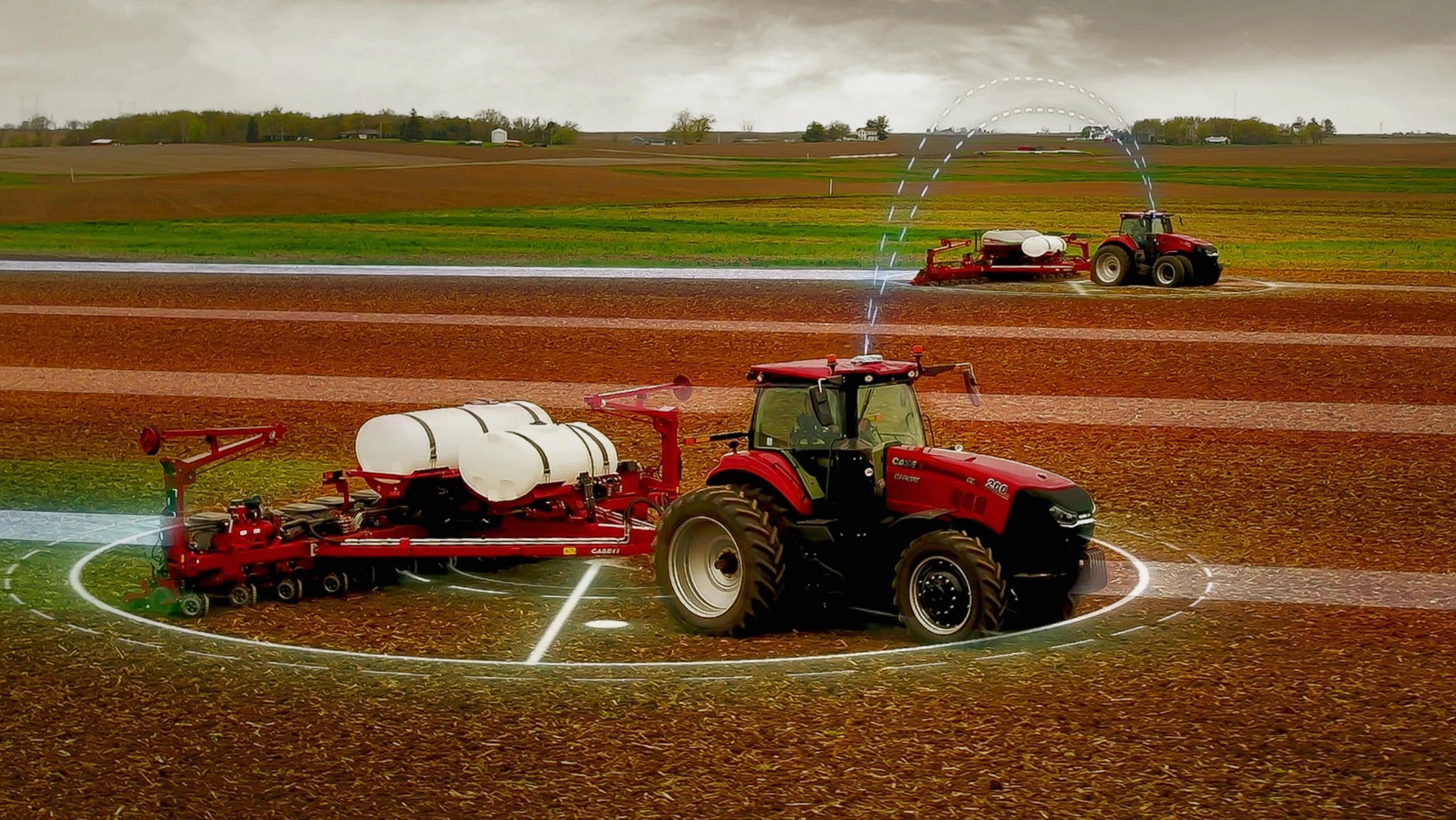
Cost Analysis and Investment Justification
Understanding complete AFS ownership costs helps farmers evaluate whether systems fit operational requirements and budgets.
Initial Investment Breakdown
Basic Factory System (New Tractor):
- AFS AccuGuide steering with WAAS: $6,000-$8,000
- AFS Pro 700 display: Included in above
- AFS Pro 300 receiver: Included in above
- Factory installation and calibration: Included in above
- Total basic factory system: $6,000-$8,000 added to tractor base price
Premium Factory System (New Tractor):
- AFS AccuGuide steering with RTK: $12,000-$16,000
- AFS Pro 1200 display: Included in above
- AFS Pro 700 receiver with RTK: Included in above
- AFS Connect telematics: $800-$1,200
- Factory installation and calibration: Included in above
- Total premium factory system: $12,800-$17,200 added to tractor base price
Retrofit Installation (Existing Equipment):
- AFS Pro 700 display: $4,200-$5,200
- AFS Pro 600 receiver: $3,500-$4,500
- Steering controller and hydraulic components: $3,000-$4,500
- Installation labor and calibration: $2,000-$3,500
- Total retrofit system: $12,700-$17,700
AFS Connect Connectivity:
- Cellular modem hardware: $800-$1,200 per machine
- Installation: $300-$500
- Annual service subscription: $600-$900 per machine
Annual Operating Costs
Correction Service Subscriptions:
- Free WAAS: $0 (basic accuracy)
- RTX satellite corrections: $1,800-$2,400 per receiver annually
- RTK network subscriptions: $1,500-$3,000 per receiver annually
- Own RTK base station: $8,000-$12,000 initial, $400-$700 annually for cellular/maintenance
Software and Connectivity:
- AFS Connect annual subscription: $600-$900 per connected machine
- Software updates: Free with active AFS Connect subscription
- Premium features or modules: $200-$600 annually depending on selections
Maintenance and Support:
- Routine inspection and cleaning: $150-$300 per machine annually
- Calibration verification: Typically performed by operators, minimal cost
- Component replacement: $250-$600 annually average (cables, connectors, minor repairs)
Total Annual Operating Costs:
- Basic WAAS system: $1,200-$2,100 per machine
- Premium RTK system with AFS Connect: $3,200-$5,300 per machine
Return on Investment Analysis
ROI Example - 3,000 Acre Corn/Soybean Operation:
Annual Benefits:
- Input savings (10% reduction on $375,000): $37,500
- Fuel savings (12% on $28,000): $3,360
- Yield improvement (4% on $900,000 gross revenue): $36,000
- Labor efficiency gains: $8,000
- Equipment productivity improvement value: $12,000
- Total annual benefit: $96,860
System Investment:
- Three tractors with premium AFS systems: $51,000
- Two combines with AFS and Connect: $28,000
- One sprayer retrofit: $16,500
- Total initial investment: $95,500
Annual Operating Costs:
- Correction subscriptions (5 receivers RTK): $13,500
- AFS Connect subscriptions (5 machines): $4,000
- Maintenance and support: $1,500
- Total annual operating: $19,000
First Year Analysis:
- Total first year cost: $114,500
- Total first year benefit: $96,860
- Net first year: -$17,640
Second Year and Beyond:
- Annual benefit: $96,860
- Annual operating cost: $19,000
- Net annual benefit: $77,860
Payback Period: 1.2 years (initial investment divided by net annual benefit)
Operations under 1,500 acres typically experience 2-3 year payback periods. Large farms over 5,000 acres often achieve payback within first season through scale benefits. Custom operators and contractors frequently see immediate positive returns through premium pricing enabled by precision agriculture documentation and service quality.
Conclusion
Case IH Advanced Farming Systems represents mature, deeply integrated precision agriculture technology backed by decades of development and hundreds of thousands of installations globally. The AFS platform delivers comprehensive functionality spanning guidance, application control, yield monitoring, fleet management, and emerging autonomous capabilities through factory-integrated systems optimized specifically for Case IH equipment.
AFS AccuGuide automated steering provides accurate, reliable hands-free guidance with performance matching competitive systems when equipped with equivalent correction services. The factory integration approach delivers seamless operation, optimal component placement, and model-specific calibration exceeding aftermarket installation quality. For Case IH equipment owners, AccuGuide represents the logical precision agriculture choice offering proven performance and dealer support through established Case IH relationships.
AFS Pro Series displays serve as capable operator interfaces providing essential precision agriculture functionality without overwhelming complexity. The dual-display strategy addresses different operational scales - the Pro 700 satisfying most farming operations while the Pro 1200 serves premium markets demanding maximum capability. Both displays run identical software ensuring operator consistency across equipment fleets.
AFS Connect connectivity transforms equipment into networked assets providing real-time visibility, remote support, and automatic data synchronization. The platform delivers immediate operational benefits through improved coordination, faster issue resolution, and efficiency optimization. As agriculture increasingly embraces data-driven decision making, AFS Connect positions Case IH favorably for evolving precision agriculture requirements.
The CNH-Raven integration creates opportunities for enhanced application control, individual nozzle management, and autonomous equipment capabilities. Case IH equipment owners access Raven's specialized technologies through factory provisions and engineered integration paths, combining strengths of both organizations into comprehensive precision agriculture solutions.
For operations committed to Case IH equipment or those wanting precision agriculture systems backed by equipment manufacturer support and warranty coverage, AFS delivers proven, reliable technology with comprehensive dealer support infrastructure. While aftermarket alternatives from Trimble, Ag Leader, and others offer broader multi-brand compatibility, AFS's equipment-specific optimization and factory integration provide advantages for Case IH-focused fleets.
The system costs position AFS competitively within the precision agriculture market - neither the lowest-cost option nor premium-priced. The value proposition centers on integration quality, manufacturer support, and proven reliability rather than aggressive pricing or feature proliferation. Operations prioritizing these attributes find compelling value in AFS systems despite alternatives potentially offering lower initial costs or specific feature advantages.
Maximize your Case IH AFS technology investment with expert software development from A-Bots.com. Our agricultural technology development services enhance AFS implementations through specialized solutions:
Custom Ground Control Station Development - Create tailored supervision interfaces for fleet management, multi-machine coordination, and operational monitoring. We design intuitive control centers processing AFS Connect telemetry, integrating multiple data sources, and presenting information optimized for your management workflows and decision-making requirements.
AFS Connect Integration Services - Build custom API connections linking Case IH AFS Connect with ERP systems, accounting platforms, cooperative management tools, and proprietary agricultural databases. Our integration solutions eliminate manual data entry, ensure information consistency across business systems, and create seamless workflows connecting field operations with enterprise management.
Mobile Application Development - Develop iOS and Android applications extending AFS capabilities with specialized tools for field documentation, equipment inspection checklists, maintenance tracking, and operational planning. Mobile apps complement AFS Pro displays with functionality addressing unique operational requirements unavailable in standard software.
Advanced Data Analytics - Build sophisticated analysis tools processing operational data from AFS systems, generating insights impossible with standard reports, supporting agronomic decision-making through custom algorithms, and creating predictive models leveraging years of historical information.
Display Interface Customization - Modify AFS Pro display interfaces creating optimized operator experiences for specific workflows, implementing automation shortcuts, developing specialized screens for particular operations, and simplifying complex procedures through custom interface design where system architecture permits modification.
Prescription Management Systems - Develop custom prescription generation tools, automated prescription creation workflows, and integration between agronomic analysis platforms and AFS systems. Streamline prescription development, reduce manual prescription creation workload, and implement intelligent prescription logic supporting continuous agronomic optimization.
Testing and Quality Assurance - Comprehensive compatibility testing ensuring AFS systems work flawlessly with your specific equipment configurations, implement combinations, and operational procedures. We validate system performance, identify potential issues before field deployment, and ensure technology investments deliver expected benefits.
Training Content Development - Create custom training materials, video tutorials, interactive guides, and documentation tailored to your operation's specific AFS configuration and workflows. Effective training maximizes technology adoption, ensures operators utilize system capabilities fully, and reduces support requirements through comprehensive educational resources.
Automated Workflow Development - Implement automated processes reducing manual tasks, streamlining data transfers between AFS Connect and business systems, automating report generation, and creating efficient workflows eliminating repetitive operations and human error.
CNH Dealer Support Tools - Develop dealer-specific applications supporting AFS installations, system diagnostics, customer training, and service delivery. We create tools enhancing dealer capabilities, improving service quality, and differentiating precision agriculture support offerings.
With deep expertise in agricultural automation protocols, precision agriculture workflows, CNH Industrial technology platforms, and ground control station development, A-Bots.com transforms Case IH AFS systems from standard equipment into optimized solutions perfectly matching your operational requirements. Our team understands CNH technology architecture, AFS system capabilities, and practical agricultural implementation challenges. We deliver solutions that work reliably in real-world farming conditions, integrate seamlessly with existing operations, and provide measurable return on investment. Contact our development team to discuss how custom software enhances your Case IH AFS capabilities and maximizes precision agriculture technology value.
References
- Iowa State University Extension and Outreach - "Precision Agriculture Technology Economics and Adoption" - https://www.extension.iastate.edu/
- Purdue University Department of Agricultural and Biological Engineering - "Precision Planting Research and Field Studies" - https://engineering.purdue.edu/ABE/
- Case IH Agriculture Official Website - AFS Product Specifications and Technical Documentation - https://www.caseih.com/
- CNH Industrial Corporate - Advanced Farming Systems Development and Integration - https://www.cnhindustrial.com/
- Agricultural Industry Electronics Foundation (AEF) - "ISOBUS Standards and Universal Terminal Certification" - https://www.aef-online.org/
- Farm Equipment Magazine - "Case IH Precision Agriculture Market Analysis and Technology Updates" - https://www.farm-equipment.com/
✅ Hashtags
#CaseIHAFS,
#AFSAccuGuide,
#AFSConnect,
#CaseIH,
#AdvancedFarmingSystems,
#CNHIndustrial,
#PrecisionAgriculture,
#FactoryIntegration,
#RTKSteering,
#FarmAutomation,
#AFSPro700,
#AFSPro1200,
#AgTech,
#SmartFarming,
#PrecisionFarming,
#AgriculturalTechnology,
#CaseIHTechnology
Other articles
Custom Agriculture App Development for Farmers In 2024, U.S. farmers are more connected than ever — with 82% using smartphones and 85% having internet access. This article explores how mobile applications are transforming everyday operations, from drone-guided field scouting to livestock health tracking and predictive equipment maintenance. It examines why off-the-shelf apps often fail to address specific farm needs and how collaborative, farmer-funded app development is gaining momentum. Through real-world examples and step-by-step guidance, readers will learn how communities of growers can fund, design, and launch custom apps that fit their exact workflows. A-Bots.com offers tailored development services that support both solo farmers and agricultural groups. With offline capabilities, modular design, and support for U.S. and international compliance, these apps grow alongside the farm. Whether you're planting soybeans in Iowa, raising cattle in Texas, or running a greenhouse in California — this article offers the tools and inspiration to build your own farm technology. Discover why more farmers are saying: we don’t wait for the future — we build it.
Raven Industries Precision Agriculture: Viper 4+, Slingshot Raven Industries leads precision agriculture application control technology with specialized ground control solutions acquired by CNH Industrial in 2021. This comprehensive guide examines Viper 4+ display (10.4-inch touchscreen, ISOBUS Universal Terminal, $3,800-$4,800), Slingshot cloud connectivity platform enabling real-time fleet monitoring and remote support, Field Hub precision application controllers managing up to 128 independent sections, Hawkeye individual nozzle control with integrated flow verification, and emerging Raven Autonomy supervised autonomous equipment systems. Real-world performance data shows 8-15% input reduction through advanced section control, 60-80% herbicide savings with selective spraying, and 40-60% labor cost reduction through autonomous implementations. Complete coverage of CNH integration, installation procedures, competitive positioning, and system costs. A-Bots.com provides custom ground control station development, Slingshot API integration, and testing services for Raven systems.
John Deere Operations Center, AutoTrac and StarFire GPS John Deere Operations Center, AutoTrac automated steering, and StarFire GPS receivers form the industry-leading precision agriculture ecosystem with proven performance across millions of acres. This comprehensive 2025 guide examines system architecture, hardware components, correction service options (SF1/SF2/SF3/RTK), and cloud-based farm management capabilities. Real-world data shows 15-20% efficiency improvements, 59% herbicide reduction, and $15.70 per acre savings. We analyze retrofit costs ($12,000-$18,000), subscription fees ($1,800-$2,400 annually), and adoption statistics (58-82% penetration on large farms). Technical comparison with Trimble, Case IH, AGCO, and Topcon alternatives helps farmers make informed decisions. A-Bots.com offers custom mobile app development, system integration, and testing services for precision agriculture technology enhancement.
Trimble GFX Agriculture Guidance and AutoPilot Systems Trimble AutoPilot and Trimble GFX systems dominate aftermarket precision agriculture with hundreds of thousands of installations worldwide. This comprehensive technical guide examines the complete product lineup including GFX 350 entry display, GFX 750 mid-range system, GFX 1060 large-format console, and premium GFX 1260. Detailed specifications for NAV 500 and NAV 900 navigation controllers cover GNSS accuracy levels, correction services (RangePoint RTX, CenterPoint RTX, RTK), and terrain compensation technology. Real-world performance data shows 8-12% fuel savings, 10-15% overlap reduction, and 1-2 year payback periods. Multi-brand compatibility works with John Deere, Case IH, AGCO, and all tractor manufacturers. Complete installation procedures, cost breakdowns, competitive comparisons, and maintenance requirements. A-Bots.com offers custom software development, API integration, and testing services for Trimble implementations.
Ag Leader InCommand 800 and 1200 Precision Agriculture Displays Ag Leader InCommand displays dominate independent aftermarket precision agriculture with tens of thousands of installations worldwide. This comprehensive technical guide examines InCommand 800 (8-inch display, quad-core processor, $3,500-$4,500) and InCommand 1200 (12.1-inch screen, hexa-core processor, $5,500-$7,000) systems including detailed specifications, capabilities, and performance characteristics. Complete coverage of SureDrive automated steering achieving 2-4 cm RTK accuracy, SMS farm management software for prescription creation and data analysis, and universal compatibility with John Deere, Case IH, AGCO, and all equipment brands. Real-world performance data shows 12% input reduction, 10-15% fuel savings, and 1-2 year payback periods. Installation procedures, correction service options, competitive comparisons, and maintenance requirements included. A-Bots.com provides custom software development, API integration, and testing services for Ag Leader implementations.
Top stories
Copyright © Alpha Systems LTD All rights reserved.
Made with ❤️ by A-BOTS
